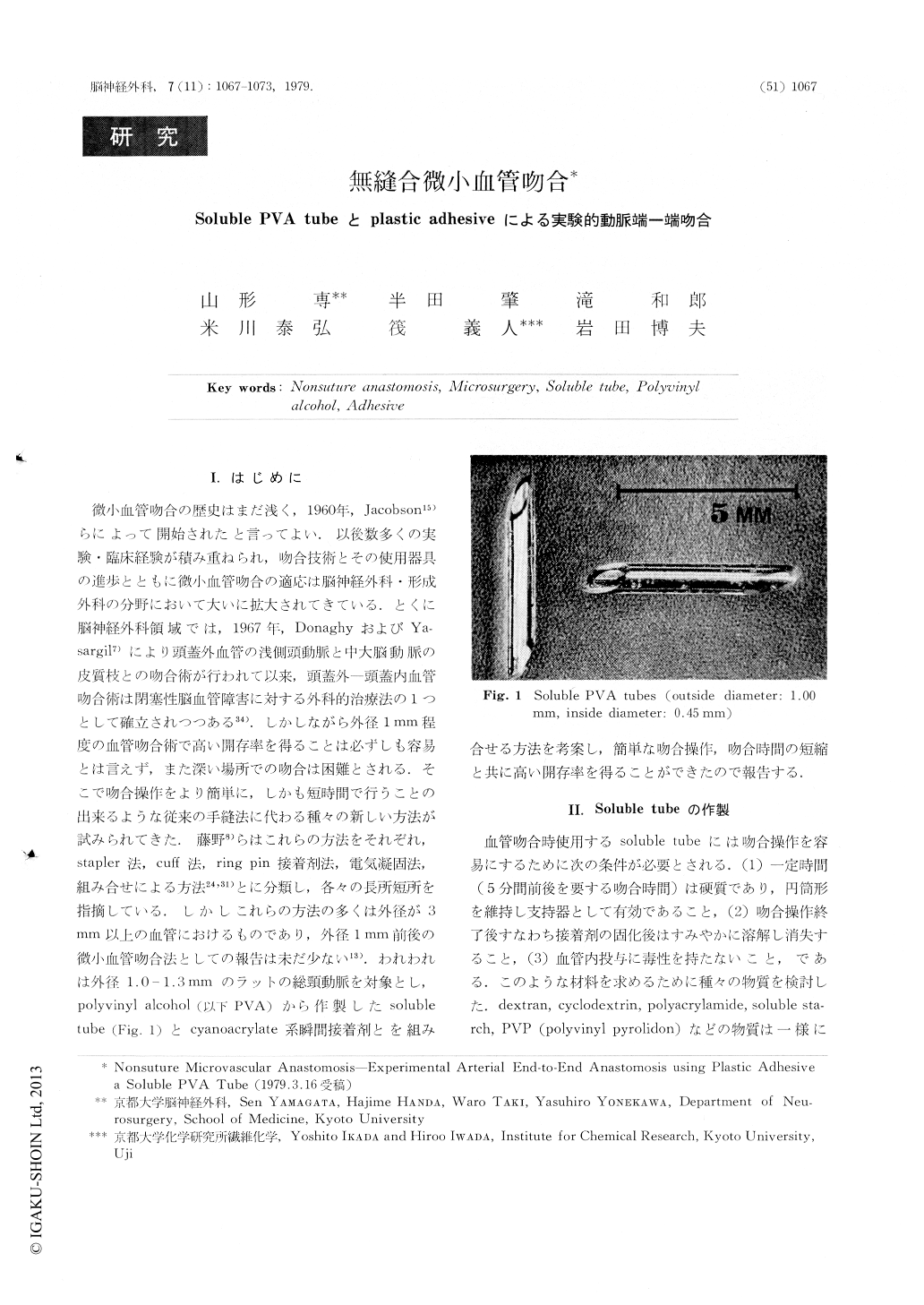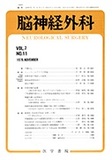Japanese
English
- 有料閲覧
- Abstract 文献概要
- 1ページ目 Look Inside
Ⅰ.はじめに
微小血管吻合の歴史はまだ浅く,1960年,Jacobson15)らによって開始されたと言ってよい.以後数多くの実験・臨床経験が積み重ねられ,吻合技術とその使用器具の進歩とともに微小血管吻合の適応は脳神経外利・形成外科の分野において大いに拡大されてきている.とくに脳神経外科領域では,1967年,DonaghyおよびYasargil7)により頭蓋外血管の浅側頭動脈と中大脳動脈の皮質枝との吻合術が行われて以来,頭蓋外—頭蓋内血管吻合術は閉塞性脳血管障害に対する外科的治療法の1つとして確立されつつある34).しかしながら外径1mm程度の血管吻合術で高い開存率を得ることは必ずしも容易とは言えず,また深い場所での吻合は困難とされる.そこで吻合操作をより簡単に,しかも短時間で行うことの出来るような従来の手縫法に代わる種々の新しい方法が試みられてきた.藤野8)らはこれらの方法をそれぞれ,stapler法,cuff法,ring Pin接着剤法,電気凝固法,組み合せによる方法24,31)とに分類し,各々の長所短所を指摘している.しかしこれらの方法の多くは外径が3mm以上の血管におけるものであり,外径1mm前後の微小血管吻合法としての報告は未だ少ない13).
Microvascular anastomosis is now widely applied and many improved methods of the nonsuture anastomosis have been developed in stead of the suture anastomosis for the purpose of saving time and making the reconstruction easier.
We introduced a new nonsuture method of microvascular anastomosis using plastic adhesive and a soluble tube made of polyvinylalcohol (PVA). PVA, which had been utilized as a plasma expander, is a water-soluble polymer and its solubility is changeable depending on the degree of polimerization and percent saponification.

Copyright © 1979, Igaku-Shoin Ltd. All rights reserved.


